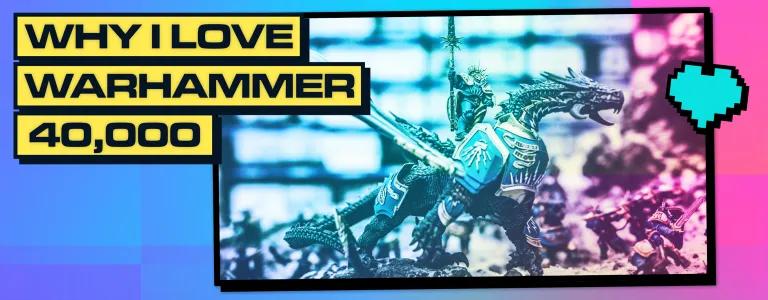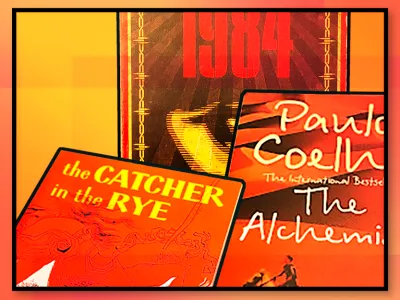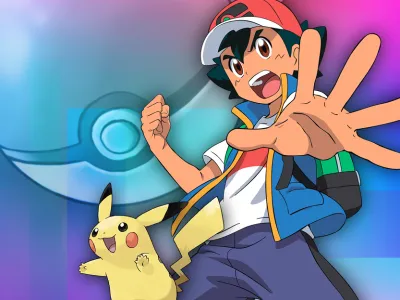
Why I Love Warhammer 40,000
By Faiyaz, a member of our Writers' Club.
Most hobbies are pretty straightforward and well known – think reading, drawing, sports, playing video games, stuff like that. On the other side of the coin, there’s things like the so-called ‘Warhammer hobby’. On the surface, Warhammer is a strategy game where you use plastic models to represent soldiers. But when you factor in the painting of those models, all the books containing detailed lore on the Warhammer universe, numerous video games, and even an animated TV show, it starts to look less like a hobby and more like a full-time occupation. Personally, I think it’s a really great world to stick your teeth into, and I’d like to share some of the reasons why I love it so much.
“In the grim darkness of the far future, there is only war…”
Warhammer is divided into two main sections: Warhammer Age of Sigmar (formerly Warhammer Fantasy, which inspired the Total War: Warhammer games) and Warhammer 40,000 (the sci-fi version). While Age of Sigmar is a very popular game with lots of cool fantasy elements, I’ve personally never played it. I have, however, played Warhammer 40,000, and I’ve played it a lot.

I started way back in Year 7 partially by accident; I asked the library about joining a book club, and they told me about their Warhammer club.
You need certain products to start playing, and they’re all sold in what is now handily known as ‘The Warhammer Shop’. I’d been there before to get the Middle Earth strategy game (which is exactly the same thing as Warhammer, but in the Lord of the Rings universe). Combine those two happy little accidents and young impressionable me was ready to dive straight into the world of Warhammer.
Grimdark: a subgenre of speculative fiction with a tone, style, or setting that is particularly dystopian, amoral, and violent.
When it comes to describing Warhammer 40,000, ‘grimdark’ is a word that’s thrown around a lot because 40k is a universe almost entirely devoid of good guys. It’s set in the 41st millennium, where humanity has an enormous empire that stretches across the entire galaxy. After a crippling civil war 10,000 years before, the progress of mankind has ground to a halt and the dominion of man has been steadily shrinking as it fights for survival. A big part of the reason for this is the influence of Chaos, a corrupting force emanating out of the realm of souls which convinced Horus — mankind’s second-greatest general before the Holy God-Emperor —to turn on his species and start a civil war, known as the Horus Heresy.
Aside from Chaos, there are also plenty of alien threats which beset humanity on all sides, from the inconsequential and annoying (T’au Empire, Drukhari) to ones which have a genuine chance of completely eradicating mankind (Tyranids, Necrons). Knowing how dire the situation is in the 41st millennium, it’s easy to understand the game’s tagline ‘In the grim darkness of the far future, there is only war…’.
Part of the reason I love this setting so much is because of how different it is from other sci-fis. In Star Wars, for instance, no-one is doubting that the Rebels are the good guys, but in 40k the Imperium of Man is so blatantly authoritarian that most leaders are just as bad, if not worse, than the leaders of their enemies. And there’s humour to be found in such a dark world. The Orks, literal fungus who live only for carnage and destruction, drive their ‘Boyz’ around in ‘Trukks’, and they’re one of the most dangerous races in the galaxy. The lore is so richly realised by a host of literature (or, if you’re like me and prefer videos, there are countless ones on YouTube). Warhammer is one of the best sci-fi universes ever made and it’s just so cool.

Choose your army
“Waaagh!”
The physical game has 20 playable armies, organised into the Imperium of Man, Forces of Chaos and the Xenos armies. The core of your army is made up of units of troops, with each one represented by a plastic miniature, and their leaders. Players take turns to move their units across the board, fire their weapons, charge into vicious melee combat and more. The end goal is usually to capture specific objectives scattered across the board.
The miniatures are painted by you, and you can paint them however you want to. Each army has their own unique playstyle, as well as distinct strengths and weaknesses. For instance, take the Space Marines, an army of genetically engineered super-soldiers in really cool power armour. They have a unit for everything, their infantry is really strong, and because of that they usually won’t have as many troops as other armies. While they’re a jack of all trades, they’re a master of none. These nuances, as well as the 190 possible army matchups, make for really stimulating games where you have to change up your game plan to suit a particular army. Saying that, I personally tend to charge in head-first and hope for the best, usually resulting in my swift death.
The scope of Warhammer is way too large for me to be able to write everything here. But if you’re a fan of strategy, you’ll enjoy it. All in all, I just think it’s so brilliant, and there’s virtually nothing else like it, which I reckon is a big part of the reason I love it so much. I would highly recommend losing yourself in hundreds of hours of lore videos, or browsing through the Games Workshop website gawping at models you can’t afford, just like I’ve been doing for years. Unlike the dark universe that it takes place in, there’s a lot of fun to be had in this hobby.
Include this article in your Skills Builder Journal. It could help you develop... 





